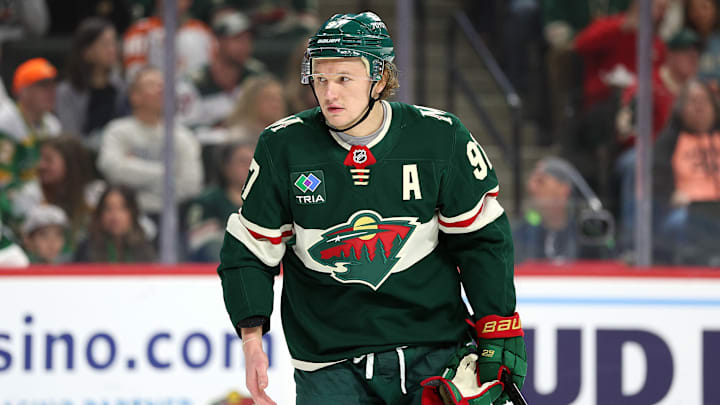The big news of the week was Kirill Kaprizov signing the largest contract in NHL history to stay with the Minnesota Wild. He previously turned down what would have been the highest contract in NHL history before agreeing to the even higher eight-year and $136 million deal he put pen to paper to. It might be the largest NHL contract in history as of now, but with the cap rising and stars such as Connor McDavid about to need new deals, it might not stay like that for long.
In an NHL.com piece about Kaprizov’s pay day, ESPN’s Emily Kaplan said it was because we are entering the “player empowerment era”. She went onto explain, “we have guys that are saying I know what I'm worth and I know where I want to go and I'm not afraid to stand my ground and I think that aligns with a lot of the other sports." Anyone who follows the other major professional sports sees what kind of power star athletes have. The NHL might have seen like it lagged behind in almost diva-ish behavior of some athlete’s demands, but let’s not act like this is entirely something new.
Perhaps Eric Lindros is the most famous example. The highly touted prospect was sure to go first overall and demanded that he not end up on the Quebec Nordiques. The Nordiques, with that year’s first overall pick, drafted him but Lindros did not relent. Lindros famously refused to wear the jersey after being selected for the ceremonial photo opp. The Nordiques would have to give into his demands and trade him to the Philadelphia Flyers.
Then there was the 2004-2005 NHL lockout. Commissioner Gary Bettman is the main scapegoat, but then NHLPA head Donald Fehr was an equal carrier of the blame. The players united efforts against the owner’s financial proposal whipped out an entire season. When the conflict was over, the then CBA gave players a 57% share of hockey related revenue. Hard to say that wasn’t financially empowering. For the record, the revenue split became 50/50 after the 2012-2013 lockout.
Maybe the best historical example was the World Hockey Association. When the “rebel league” wanted to compete against the well-established NHL, they began signing their players to large contracts. First Bobby Hull signed a then astronomical $2.7 million contract over 10 years, a sum unheard of in those days for a hockey player. That was followed by Boston Bruins bad boy playboy Derek Sanderson leaving behind a potential dynasty with Bobby Orr to be the highest paid athlete in the world at that time with the Philadelphia Blazers.
In his book “Crossing the Line: The Outrageous Story of a Hockey Original” Sanderson recalls the almost comical laundry list of demands he had written in his contract. The court case that resulted from Sanderson’s jump to the new league effectively ended the reserve clause in NHL contracts. The “reserve clause” effectively made players property of their respective NHL team in perpetuity, not just for the length of the contract. Its removal was a major win for player’s rights. Was that not player “empowerment”, or just the removal of unfair barrier that had shifted power unfairly towards owners?
Player empowerment is nothing new. Just now with the increasing cap and all the media attention the league garners had put a new spotlight and new price tag on it. The “flat cap” of the past few seasons but financial constraints on teams which obviously players weren’t happy about. Now there’s much more flexibility.
You could argue the NHLPA is stronger than ever. Bettman lauds his relationship with NHLPA executive director Marty Walsh. It also helps that Walsh is a former cabinet member to the United States president and former mayor. There is no doubt the labor peace is a byproduct of the players having power, and the league knowing and working with them instead of against them.
